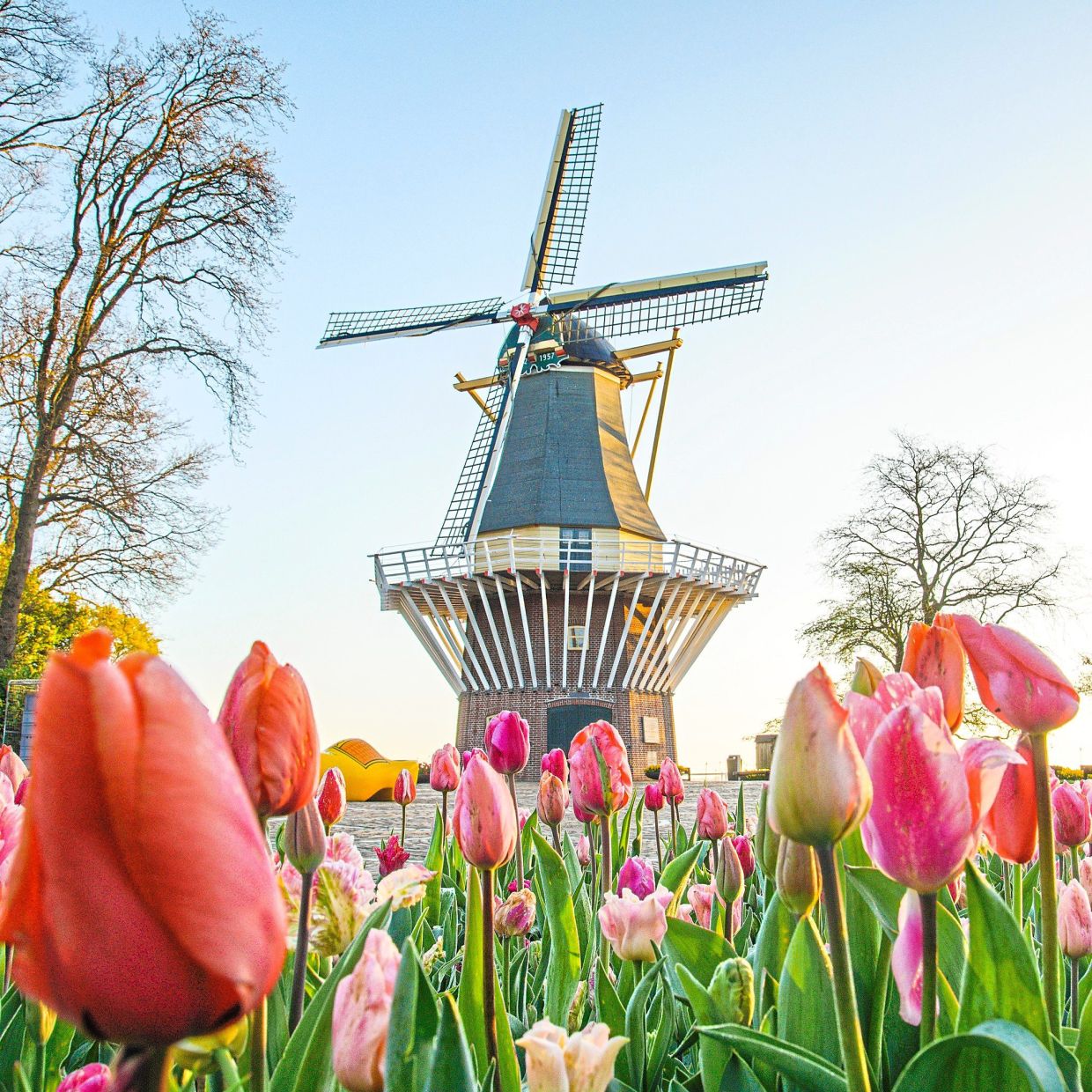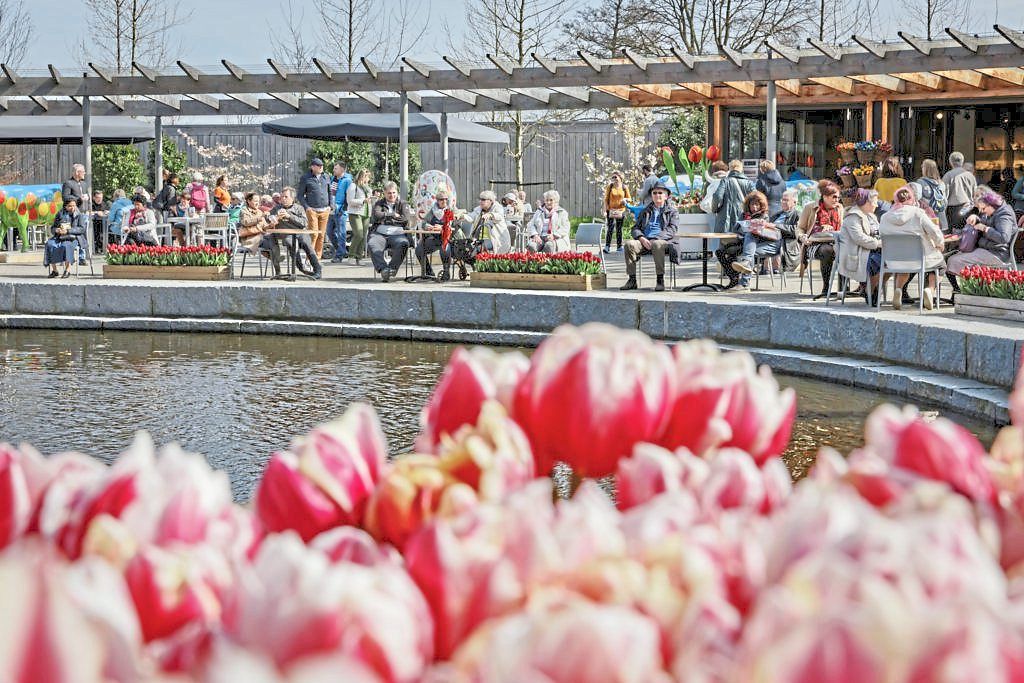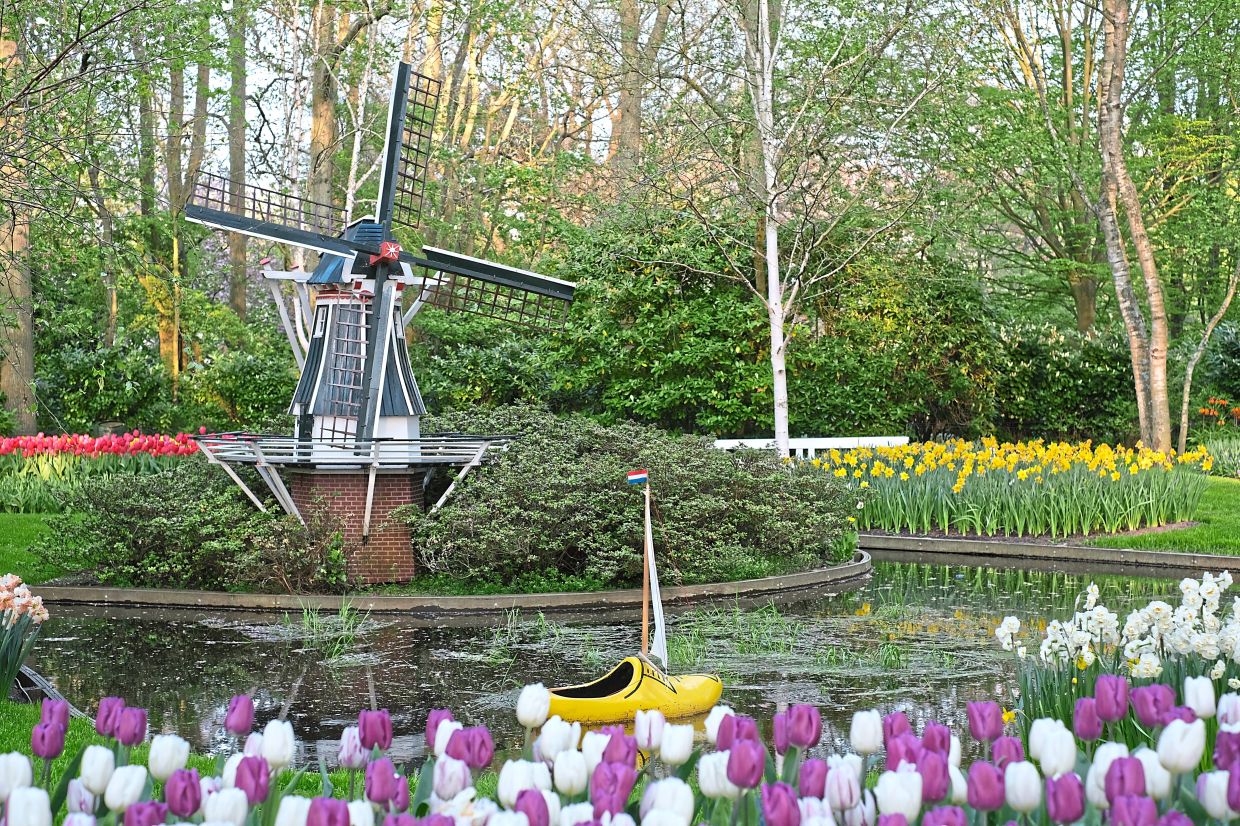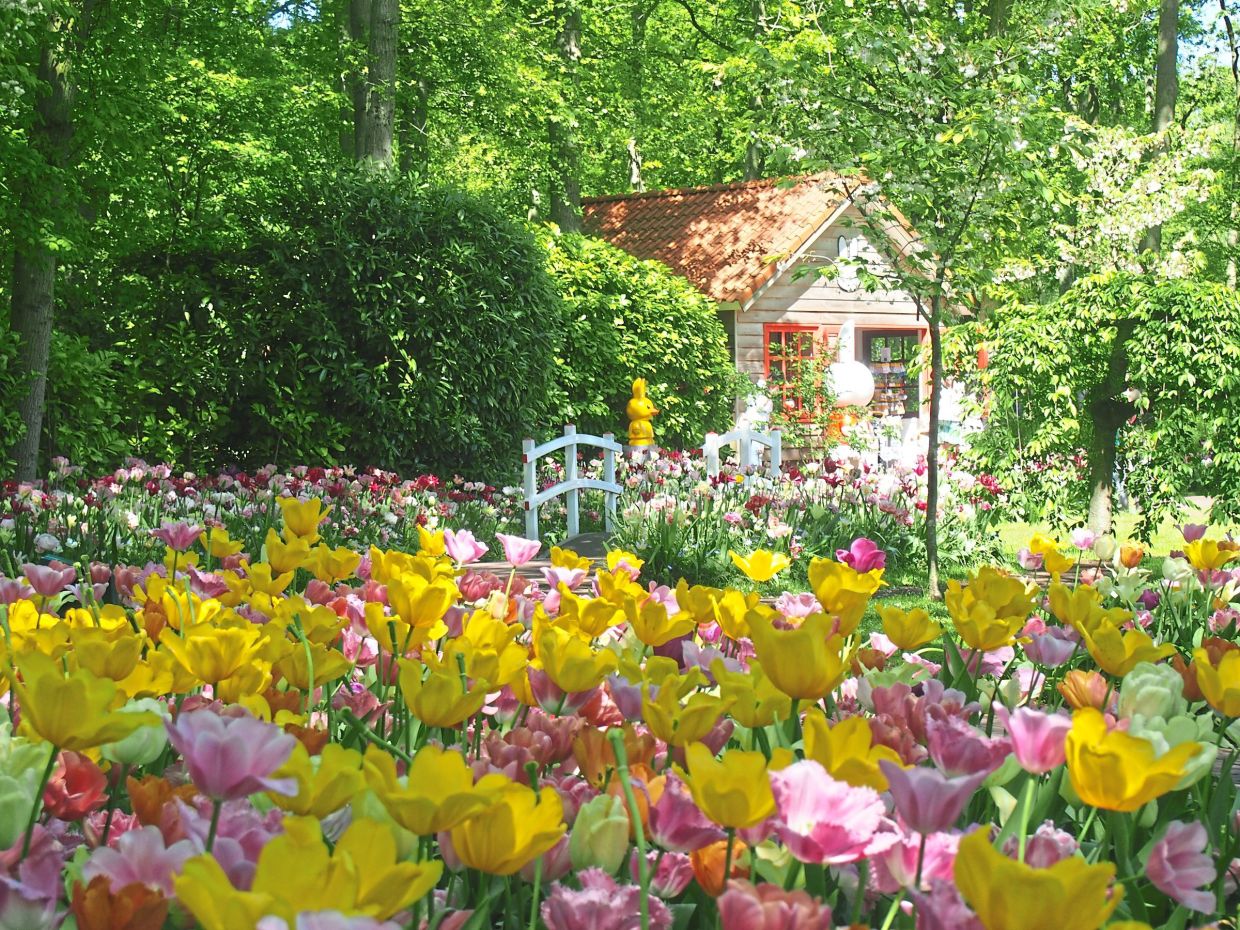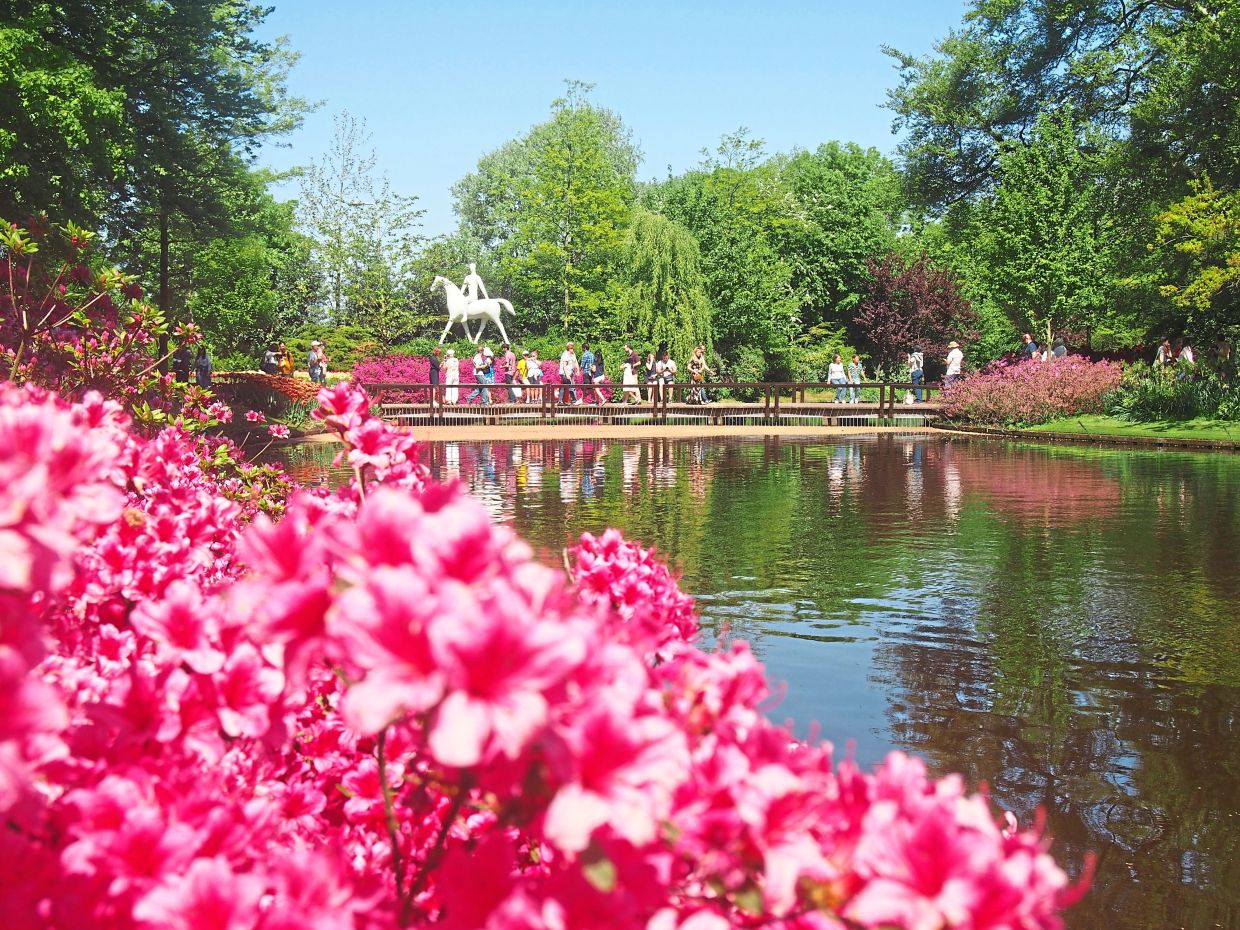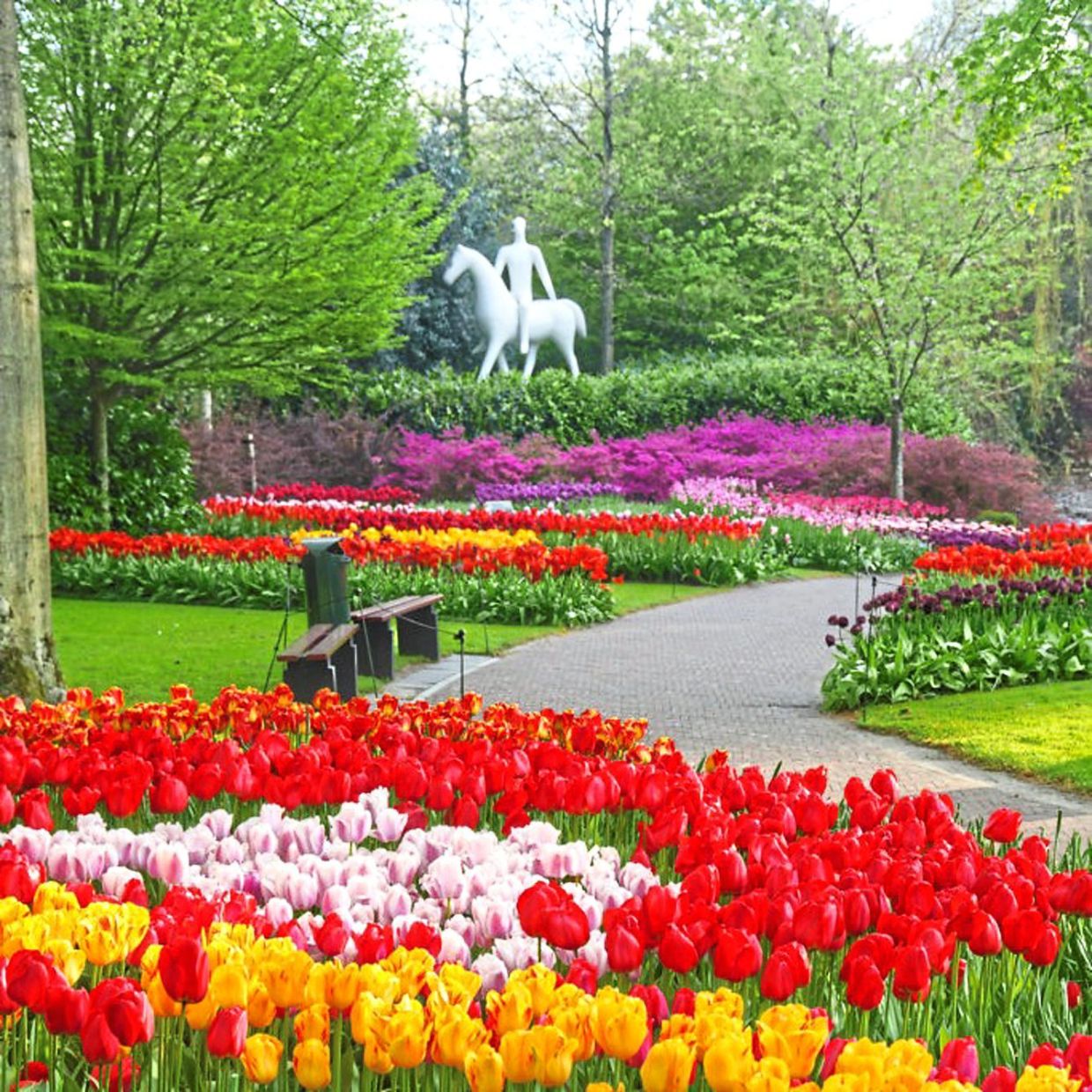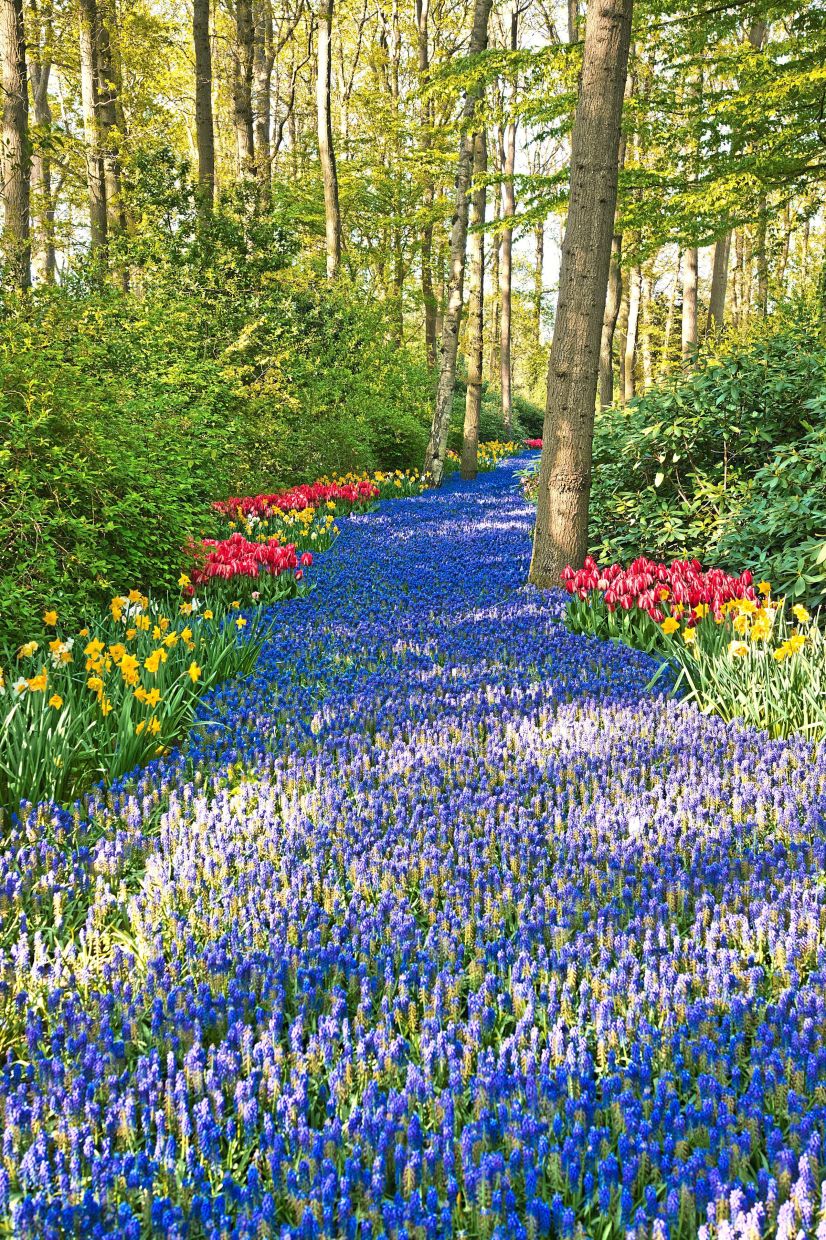Visitors admiring Keukenhof’s beautiful blooms. — Visit Keukenhof/Facebook
Come springtime, the world is filled with colours once again as petals unfurl and greens re-emerge.
Botanical gardens best illustrate this welcoming of spring, and Europe has no shortage of such enchanting places. In fact, there are more than 900 botanical gardens in the continent!
For us in our tropical climate, winter giving way to spring is not a phenomenon we can witness firsthand. So, why not plan a flower-powered trip to Europe’s beautiful gardens – and where better to start than the world’s largest tulip garden: Keukenhof?
For the love of Keukenhof
With an area covering 32ha, Keukenhof Gardens in the Netherlands boasts a whopping seven million spring-flowering bulbs. Whether referred to as simply Keukenhof, Keukenhof Tulip Gardens, or the “Garden Of Europe”, this spring destination in Lisse offers plenty beyond its blooming beauties.
While officially opened to the public in 1950, the park’s long history stretches back to its existence as a 15th-century hunting grounds and kitchen garden, which became part of the Keukenhof Castle that was built in 1641. The castle gardens were then redesigned in 1857 in an English landscape style, serving as the foundation of the now world-famous flower park.
Having celebrated its 75th edition this year, Keukenhof Gardens is set to bloom wonderfully again when it opens for its 2025 season from March 20 to May 11.
Even though the park is only accessible to the public for three months yearly, data from Statista.com shows that it has easily received over one million visitors per year in the past decade – with the exception of pandemic-ridden 2020/2021.
For 2024 itself, Keukenhof shared that it welcomed more than 1.4 million visitors from 100 different countries. This promising figure suggests that next year’s attendance might even surpass its record number so far, which was around 1.5 million in 2019.
Given its popularity, entrance tickets to the park unsurprisingly get sold out regularly. It is advisable to book ahead via the official website (https://keukenhof.nl) when planning your trip, or get your travel agent to book them for you.
Entrance tickets are priced at €9 (RM42) for children and €20 (RM94) for adults. Groups, with a minimum of 20 people per group, can purchase the tickets at a slightly lower price of €19.50 (RM91) per person.
The website even provides a “flower report” so you may gauge when the best time is to visit, as each stage of the season brings different types of perennials. For example, hyacinths are available in early spring (March to early April) and mid spring (early April to mid-April), while alliums bloom only in late spring (mid-April to early May).
The tulip varieties also differ depending on the flowering periods. If you want to catch the long-stemmed tulips, it’s best to visit in late spring.
It can take two to four hours to take in everything at the park, so if you’re not up to wandering on foot the entire time, you can always rent a bike or join a 45-minute canal tour on the electric-powered “whisper boat”.
If you have your little ones in tow, they’ll have plenty of fun watching the various animals at the animal meadow, wandering around in the maze and exerting their endless energy at the playground. They can also play at the section dedicated to the popular Dutch bunny character, Miffy.
Don’t forget to take a photo, be it with family or solo, at the Keukenhof Windmill. The four-decade-old windmill is to the park as Eiffel Tower is to Paris: A quintessential holiday backdrop.
There are also various statues and sculptures dotting the park, 19 of which are permanent while the others may only be exhibited for a season. You can locate these using the handy map provided on the Keukenhof website.
Beyond the tulips
Since the tulip park is part of the Keukenhof Castle, walking the 500m distance from one to the other is very much doable.
The castle – or 17th-century mansion, to be precise – has its own gardens full of beautiful blooms. Open all year round, the place offers free entry and is especially nice for families with little kids as it has a petting zoo.
Within the grounds of the castle is another interesting attraction: LAM Museum. The art museum focused on food, drink and shopping boasts “the world’s largest collection of food art”.
Located about 2km from Keukenhof is the Black Tulip Museum, featuring an interactive exhibition where you can learn more about tulips and the region’s 500-year history. The museum is set in the centre of Lisse, so you can stroll around the charming little town too.
If you time your visit just right, you can even enjoy the Flower Parade (Bloemencorso Bollenstreek). The next edition takes place on April 12, 2025.
Featuring floats decorated with spring bulb flowers, the parade is the highlight of the Corsoweek, which will run throughout April 9-11. The floats will then be displayed at the Harlem Expo for a day on April 13.
The parade is one of the highlights of the widely celebrated tulip season in the Netherlands, it being as highly anticipated as the annual opening of Keukenhof Gardens.
You will most likely embark on your Keukenhof tulip journey from the capital city, Amsterdam. From there, you can take a Keukenhof Express bus, a direct transfer from Amsterdam Rai station with a travel time of 35 minutes. Alternatively, join one of the many guided tours, some of which also include visiting windmills along the way.
Magical botanical gardens
Rome Rose Garden in Italy is another garden that opens its doors for a limited time during spring, throughout April-May (and again later in October for autumn).
Or if you plan for more garden-plus-castle visits, head to The Gardens of Versailles Palace in France, an elaborately designed castle gardens that bloomed in 17th-century Europe thanks to Louis XIV.
There’s also the historic Royal Botanic Gardens, Kew in England, which has more than 40,000 living plants; the Versailles-like Sanssouci Park surrounding the Sanssouci Palace in Potsdam, Germany; and the Castle Garden in Kromeriz, Czech Republic, which is often visited together with the Flower Garden located about 1km from the castle.








